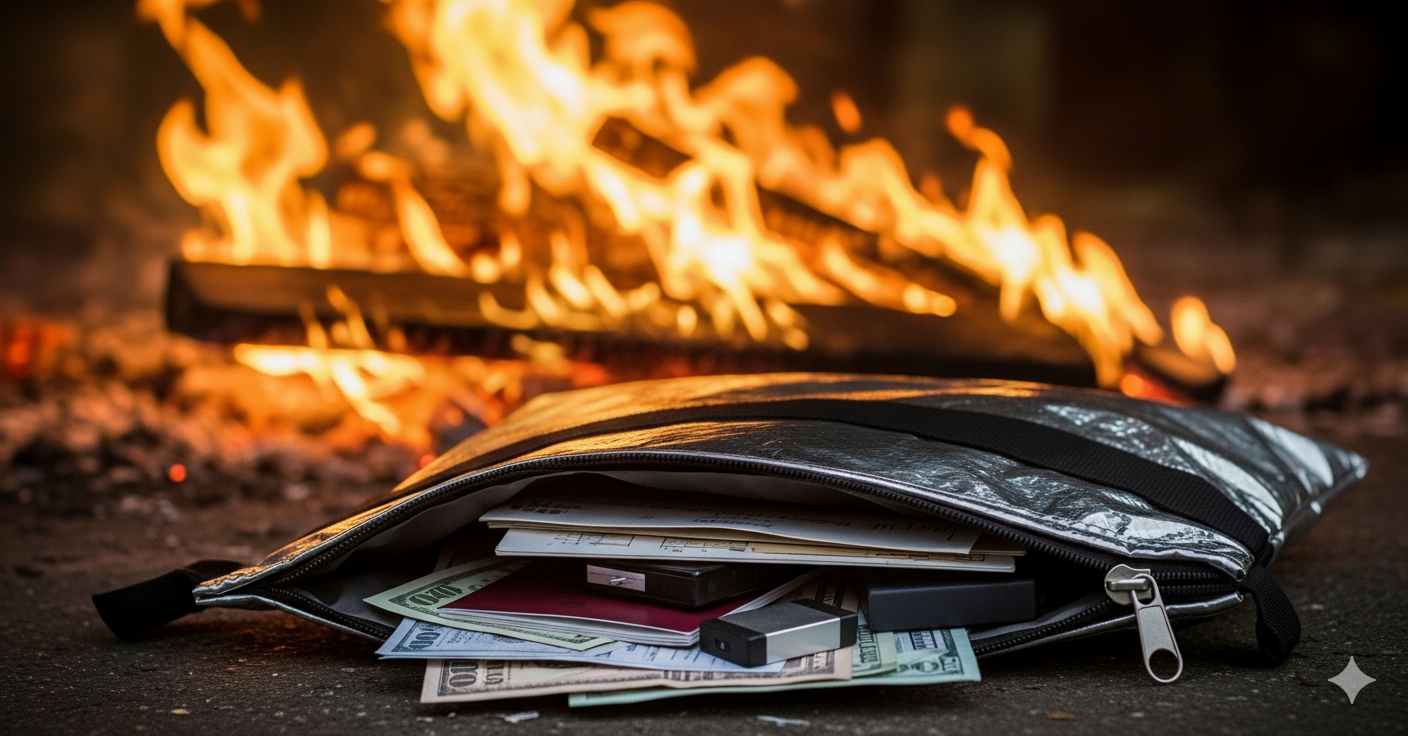The idea of a truly "fireproof" bag is a bit of a misnomer—no material can withstand fire forever. However, you can create a bag that is "fire-resistant," meaning it's designed to withstand high temperatures for a specific period, giving you a critical window to save important documents and valuables in an emergency.
While a homemade bag will never match the guaranteed performance of a professionally certified one, building your own can be an educational project that helps you understand the key principles of thermal protection.
Understanding the Science of Protection
A fire-resistant bag works by combating the three main ways heat is transferred:
-
Conduction: Heat transferred through direct contact with a solid material. To counter this, you need insulating layers with low thermal conductivity.
-
Convection: Heat transferred through the movement of fluids like air or water. A well-sealed, multi-layered bag traps air to prevent this kind of heat transfer.
-
Radiation: Heat transferred through open space, which can account for up to 80% of all heat transfer in a fire. This is why a key design principle is to use a reflective outer layer to deflect radiant energy.
A successful DIY bag must use a multi-layered design to address all three types of heat transfer.

Materials You'll Need
The effectiveness of your bag depends on the materials you choose. Here’s a breakdown of recommended materials based on their properties and your project's needs:
-
Outer Layer: Silicone-coated fiberglass fabric is a great choice. It's widely available and offers a good balance of heat and water resistance. The silicone coating also makes it easier to handle compared to raw fiberglass and enhances its resistance to chemical and environmental wear.
-
Middle Insulation Layer: Use a material with low thermal conductivity to slow heat transfer. Good options include EVA foam or nonwoven felt.
-
Inner Layer: A second layer of silicone-coated fiberglass or a durable aramid fiber like Kevlar® can be used for extra protection.
-
Closure: Use a heavy-duty, heat-resistant closure. Your best options are heat-resistant Velcro or a high-temperature zipper. A fold-over flap with Velcro provides a double seal for better protection.
-
Thread: This is a crucial detail! Standard thread will melt long before the bag's main materials are compromised, causing the seams to fail. You must use a flame-retardant thread made from aramid or meta-aramid fibers.

Step-by-Step Construction Guide
-
Cut the Fabric: Cut all of your layers—outer, middle, and inner—to the desired size, leaving enough allowance for seams. A size of 15 inches by 12 inches is common for legal documents.
-
Assemble the Layers: Stack the layers in the correct order: outer fabric, followed by the middle insulation, and finally the inner protective layer. Align the edges precisely.
-
Stitch the Bag: Using a sewing machine with a strong needle, stitch the layers together along the bottom and side seams. Reinforce your seams with a double stitch to increase their strength and integrity.
-
Add the Closure: Sew your heat-resistant closure onto the open end of the pouch. If you're using Velcro, you can add a fold-over flap to create a double seal and provide more protection against heat and air.

Critical Safety Warnings
Handling materials like fiberglass requires strict safety precautions. Fiberglass is made of microscopic glass fibers that can cause physical irritation, microscopic cuts, and respiratory issues if inhaled.
-
Wear PPE: Always wear personal protective equipment (PPE). This includes a disposable coverall over long sleeves and pants, work gloves, protective goggles, and a dust mask.
-
Clean Up Properly: After your project is done, remove your clothes outside to avoid cross-contamination and keep them separate from other laundry. Clean the work area using a vacuum and then wipe down all surfaces.
-
Wash Your Skin: To dissolve any embedded fibers, rinse your skin with vinegar and then take a hot shower.

The Most Important Thing to Know
A DIY bag, no matter how well-made, cannot offer the same level of protection as a professionally certified product. A homemade bag lacks any third-party testing or certification, so its performance is completely unknown in a real-world fire. For irreplaceable items, the risk of an unknown level of protection is simply too high.
The best and most comprehensive fire protection plan is a hybrid strategy: use a certified fire-resistant bag to organize documents for easy evacuation, and then store that bag inside a certified fire safe for superior long-term protection against both fire and theft. Additionally, always digitize your most important documents and back them up to a secure off-site location or cloud service as a crucial fail-safe.


